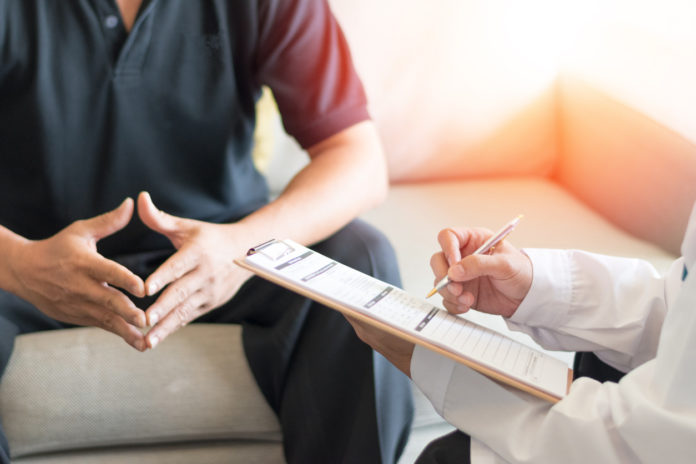As a result of the COVID-19 epidemic and the resulting regulatory drive for more access to treatment, remote patient monitoring (RPM), although not new, is fast growing.
Connected electronic instruments capture health and medical data in one area that a healthcare practitioner then evaluates in another location. The data may or may not be accessed as soon as it is sent.
Diabetes, hypertension, and COVID-19 are just some illnesses that remote patient monitoring is being used to treat in health systems around the country. According to a recent report by the Centers for Medicare and Medicaid Services, RPM is becoming an increasingly significant element of healthcare.
Basics of RPM
- Treating chronic and acute illnesses
RPM now plays a massive role in treating chronic and acute illnesses, allowing doctors to monitor patients when in-person therapy is not practical. RPM, for example, will enable doctors to monitor patients in near real-time, collect relevant data, and make modifications to enhance treatment outcomes in chronic care. Diabetes, heart diseases, asthma, hypertension, mental health issues, and COVID-19 long-term symptoms are among the disorders that can be taken care of using this sort of surveillance.
Devices used in RPM programs include weight scales, pulse oximetry, glucose meters, blood pressure monitors, and even dedicated sensors to detect conditions such as dementia and Parkinson’s.
Wearables are another kind of RPM device that can monitor patients’ health over time. Smartwatches and continuous blood glucose monitors, for example, are aimed at the general public.
As predicted by Deloitte, the global market for consumer health and wellness wearable devices will reach 320 million units in 2022. By 2024, that number may rise to 440 million units delivered.
- Attending to urgent and acute problems
Nevertheless, healthcare facilities can utilize RPM to treat more urgent and acute problems and long-term ailments. A growing number of healthcare organizations are implementing hospital-at-home programs, which allow patients with more serious medical issues to receive care in their homes. Services include tests such as echocardiograms and X-rays, treatment options including intravenous fluid therapy, and specialized care, such as the provision of pharmacy or nursing services.
Even though hospital-at-home programs provide in-person treatment, a care team and telehealth visits check patients’ biometrics regularly.
- Monitoring post-surgery recovery
Additionally, remote patient monitoring may be employed to monitor post-surgery patient recovery. For example, a post-surgery RPM program is available for cardiac treatment patients at the University of California Los Angeles Health System. Patients participate in the program by utilizing devices given in a package to provide their care team with various biometric data, such as heart rate, blood pressure, and blood oxygen levels. If the patient progresses as predicted, monitoring these data is more manageable.
Benefits of Remote Patient Monitoring
The following are some of the benefits of making RPM a worthwhile invention in healthcare.
- Improved Availability
In a country where the rapid rise in the number of insured has made it more difficult for certain patients to contact caretakers, doctors can treat more patients thanks to remote patient monitoring. Patients throughout the country will have greater access to healthcare if more healthcare institutions use RPM technology.
- Better quality
Aside from increasing the amount of care provided, RPM may also enhance the quality of care. Because RPM allows physicians to access patient data more quickly and easily, it reduces the risk of burnout and improves patient care, which is a direct effect.
RPM also encourages patients to take more responsibility for their well-being. Rather than being in the cold, clinical, threatening medical technology that many consumers associate with RPM, effective programs provide genuinely pleasant and familiar technology to individuals.
- Reducing the Time Spent in the Hospital
The use of RPM technology may also shorten hospital stays. It is a massive benefit since many patients at a hospital don’t need to be there. However, they cannot return home because they need to be watched closely. As a result, healthcare expenses skyrocket, and hospital capacity decreases.
Because of telemedicine and RPM capabilities, patients may recuperate at home while still having their vital signs checked by their healthcare professionals. Patients may have home health aides come to their homes anytime they need assistance.
Recovering at home reduces the risk of a patient returning to the hospital. Patients benefit from better health outcomes by recovering in familiar surroundings and being surrounded by their loved ones.
- Assurance
Patients may rest easy knowing that someone is always watching over their health and well-being while under remote patient monitoring. They won’t be skeptical about their well-being and can lead an assured life.
A considerable percentage of patient care might be performed outside the hospital’s four walls as RPM technology, and processes become more advanced. It is the foreseeable future. Hospitals and other healthcare providers are poised to embrace a new era of in-home care.










